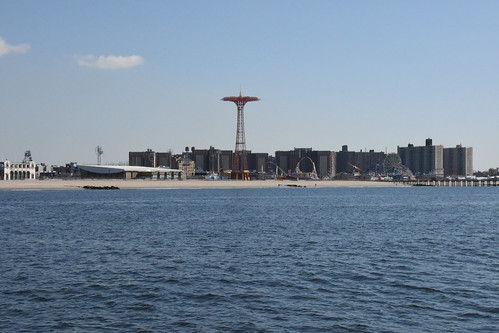FOR IMMEDIATE RELEASE 18-82 $57 Million Nitrogen Reduction Project Commences at Coney Island Wastewater Treatment Plant to Improve the Health of Jamaica BayReducing Nitrogen Discharges into Jamaica Bay will Increase Dissolved Oxygen Levels and Improve the Overall Ecology of the WaterwayProject Builds on DEP’s Recent $400 Million Jamaica Bay Improvement ProposalThe New York City Department of Environmental Protection (DEP) today announced that work will begin over the next several weeks on a $57 million upgrade to the Coney Island Wastewater Treatment Plant that will reduce the amount of nitrogen released into Jamaica Bay and help to improve the overall ecology of the waterway. The project is anticipated to be completed in 2022. This project complements the $460 million in upgrades that have already been completed to reduce nitrogen discharges from the Jamaica and 26th Ward Wastewater Treatment Plants, which similarly drain to Jamaica Bay. Nitrogen is a naturally occurring element that is found in food and other organic materials and is present in wastewater when it enters the treatment plants. Because nitrogen it is not a pathogen and poses no threat to human health, the wastewater treatment plants were not originally designed to remove it from the treated water before it is discharged into a receiving waterbody. However, more recent scientific research has found that high levels of nitrogen can degrade the overall ecology of a waterway by promoting excessive algae growth that can reduce levels of dissolved oxygen, especially in warm weather months. “Working with environmental groups and local partners we have seen tremendous improvements in the ecology of Jamaica Bay over the last 20 years and reducing nitrogen levels is one of many fronts we continue to prioritize,” said DEP Commissioner Vincent Sapienza. “This $57 million investment in the Coney Island Wastewater Treatment Plant will pay dividends for southern Brooklyn for decades to come.” “For far too long, the health of our city’s waters has been neglected,” said Council Member Mark Treyger. “There is still much work and remediation to do, but I applaud Commissioner Sapienza and DEP for continuing to boost the ecology of Jamaica Bay. This will have a positive reverberating effect on our coastal communities.” In total, New York City produces, and DEP collects and treats, an average of 1.3 billion gallons of wastewater each day. The wastewater travels through the City’s 7,500-mile sewer system until it reaches one of 14 wastewater treatment plants, where it is treated to federal and New York State water quality standards in accordance with the Clean Water Act, before it is discharged into local waterways. The Coney Island Wastewater Treatment Plant currently removes approximately 35 percent of the nitrogen present in the wastewater. The introduction of new, enhanced nitrogen removal technology, which converts the organic nitrogen present in wastewater into inert nitrogen gas that is released harmlessly into the atmosphere, requires significant upgrades to much of the plants’ supporting infrastructure. Work at the Coney Island plant will include the installation of baffles and hyperbolic mixers, new process air distribution piping and local isolation valves, new foam spray pumps and strainers, a new polymer feed system and storage, the repair of existing concrete and tank joints, and an upgrade of the electrical support system. DEP manages New York City’s water supply, providing more than 1 billion gallons of water each day to more than 9.6 million residents, including 8.6 million in New York City. The water is delivered from a watershed that extends more than 125 miles from the city, comprising 19 reservoirs and three controlled lakes. Approximately 7,000 miles of water mains, tunnels and aqueducts bring water to homes and businesses throughout the five boroughs, and 7,500 miles of sewer lines and 96 pump stations take wastewater to 14 in-city treatment plants. DEP has nearly 6,000 employees, including almost 1,000 in the upstate watershed. In addition, DEP has a robust capital program, with a planned $19.4 billion in investments over the next 10 years that will create up to 3,000 construction-related jobs per year. For more information, visit nyc.gov/dep, like us on Facebook, or follow us on Twitter. | ||
